Easing Anxiety for Families Facing Food Allergies
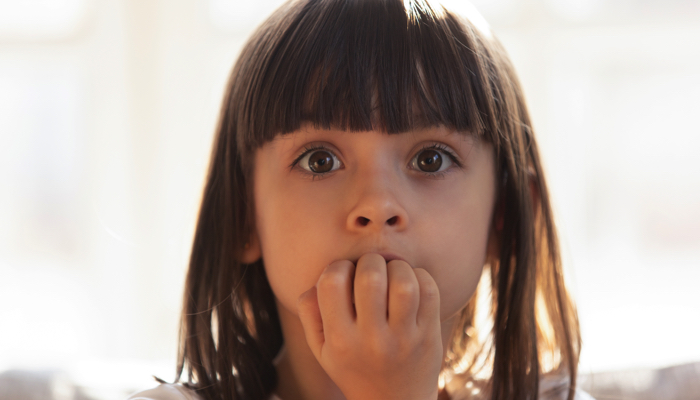
- Many practical strategies are available to help children and parents adjust to living with food allergies.
- Your child can successfully manage anxiety about having an allergic reaction to their food allergen(s).
- Processing anxiety after experiencing a severe allergic reaction is an important part of moving forward in food allergy management.
There’s a fine line between anxiety and appropriate vigilance when it comes to food allergy management.
On one hand, a food allergy sometimes feels overwhelming, as though food allergens lurk everywhere. Maintaining constant awareness of what your child is eating, whether or not it’s safe, and if they have the correct emergency management procedures in place to handle severe reactions can stress even the most regulated parent.
At the same time, a level of appropriate vigilance is generally what children with food allergies—and their parents—live with as part of normal life. It can be difficult to sustain high levels of awareness over time, as it leads to brain fatigue and decreased ability to manage other daily emotional challenges.
What does moving from a place of tension and worry to one of relative acceptance look like? Said differently, how can you cope emotionally with your (or your child’s) allergy diagnosis? It is possible for your entire family to adjust to life with a food allergy.
Coping with the Diagnosis: 3 Practical Tips for Parents
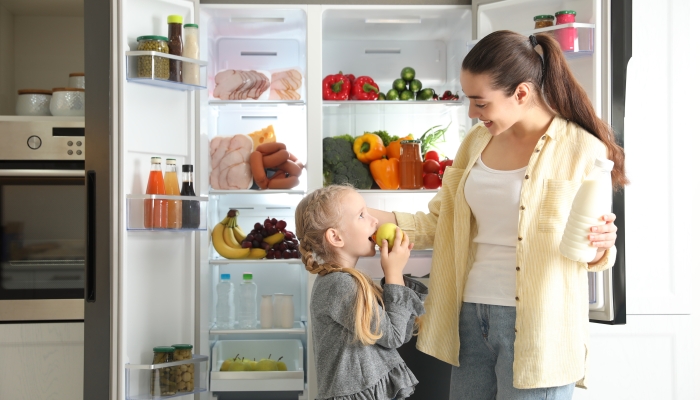
Children with food allergies aren’t the only ones who undergo a major life shift after learning they have a chronic health condition. Parents also need to adjust to a new way of thinking about food allergens and their capacity to cause a life-threatening allergic reaction.
Expect a learning curve as you work to remove a particular substance or allergen from your home while adjusting your daily life to accommodate your child’s food allergy diagnosis.
1. Educate Yourself and Your Child
If your child has food allergy symptoms caused by exposure to one of the top nine allergens, you will need to learn the details about your child’s specific allergy, as well as whether those symptoms occur after contact11. Tan, B. M., Sher, M. R., Good, R. A., & Bahna, S. L.. Severe food allergies by skin contact. Annals of Allergy, Asthma & Immunology. 2001;86(5), 583–586. https://doi.org/10.1016/s1081-1206(10)62908-0, ingestion22. Abrams, E. M., & Sicherer, S. H.. Diagnosis and management of food allergy. Canadian Medical Association Journal. 2016;188(15), 1087–1093. https://doi.org/10.1503/cmaj.160124, or airborne33. Ramirez, D. A., & Bahna, S. L.. Food hypersensitivity by inhalation. Clinical and Molecular Allergy. 2009;7(4). https://doi.org/10.1186/1476-7961-7-4 exposure.
Daily life with a food allergy also includes the need to learn avoidance strategies to prevent exposure to a food allergen via cross-contact or cross-reactivity44. Mankad, V.. Food Allergies and Cross-Reactivity. Kids With Food Allergies. 2015. https://kidswithfoodallergies.org/living-with-food-allergies/what-is-a-food-allergy/food-allergies-and-cross-reactivity, which occurs when proteins in one group of foods (like peanuts) are similar to the proteins in another food group (like tree nuts or sesame). Since the immune system recognizes them as the same substance, it can cause allergic reactions—including severe reactions.
As part of your food allergy journey with your child, you will learn that food allergens can occur in hidden places in a variety of food products and that accurately reading food labels can help prevent unintended exposures. Your child’s allergist or healthcare provider will likely give you written materials and information at the time of diagnosis to help educate your family about living with food allergies.
2. Allergy-proof Your Home
Creating an allergy-aware environment within your home can be a unique challenge, particularly if you share your home with others who don’t have food allergies or experience a severe allergic reaction when exposed.
Sharing spaces with a particular food, such as peanut products for those with a peanut allergy, can trigger anxiety in kids of all ages.
Are you wondering where to start on risk reduction to avoid the most common food allergens in your home? The experts at Kids with Food Allergies55. Avoiding Cross-Contact In Your Kitchen. Kids With Food Allergies. 2014. https://kidswithfoodallergies.org/living-with-food-allergies/choosing-safe-foods/prevent-allergic-reactions-in-your-kitchen offer helpful tips to create and maintain a safe and healthy environment for your food-allergic family member.
3. Prepare for School and Social Situations
Managing food allergy exposure for allergic children will also involve accommodations at school, during field trips, and at special events like birthday parties.
Open communication with teachers, school staff, and other parents is critical in preventing a food allergy reaction and an unexpected trip to the emergency room.
Understanding Anxiety in Children
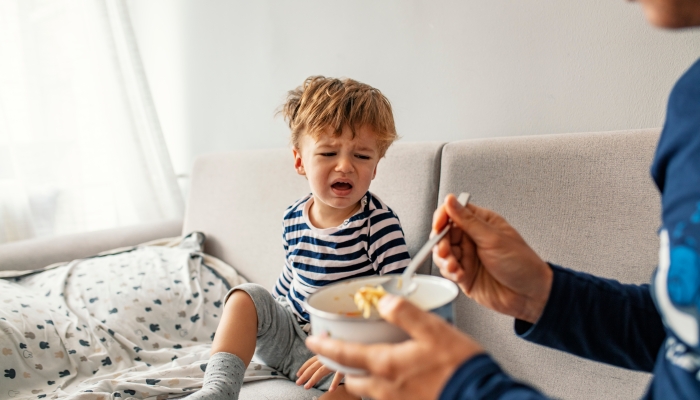
According to experts at the Mental Health Foundation66. Anxiety. Mental Health Foundation. 2022. https://www.mentalhealth.org.uk/explore-mental-health/a-z-topics/anxiety#:~:text=Anxiety%20isn’t%20necessarily%20a,ability%20to%20live%20your%20life. based in the United Kingdom, anxiety “isn’t necessarily a bad thing. It can spur us on, help us stay alert, make us aware of risks and motivate us to solve problems.” This increased vigilance can be helpful for children and their families in terms of managing allergies and watching for a severe reaction.
However, these experts note, “anxiety can be a problem if it affects your ability to live your life. If your anxiety is ongoing, intense, hard to control, or out of proportion to your situation, it can be a sign of a mental health problem.”
Experts at the Child Mind Institute report that emotional symptoms of anxiety77. Quick Guide to Anxiety in Children. Child Mind Institute. 2023. https://childmind.org/guide/anxiety-in-children-quick-guide in children can look like:
- Avoiding certain situations (school, birthday parties, family events, etc.)
- Trouble concentrating or being very fidgety
- Being clingy around parents or caregivers
- Being very self-conscious
- Tantrums
- Irritability
- Panic
Anxiety can also cause physical symptoms in children, such as:
- Trouble breathing (hyperventilating or shortness of breath)
- Abdominal pain (many children will report vague symptoms such as “my tummy hurts”, but not be able to describe it further.)
- Gastrointestinal tract symptoms, like nausea, vomiting, or diarrhea
- Sweating
- Racing heartbeat or fast pulse
- Dizziness or lightheadedness
- Blood pressure changes
- Trouble sleeping
- Headaches
- Fatigue
Your child doesn’t need to exhibit all of these symptoms to show signs of a problematic anxiety disorder. Share your concerns with your child’s healthcare provider to determine necessary next steps.
How to Help Your Child Cope with Anxiety
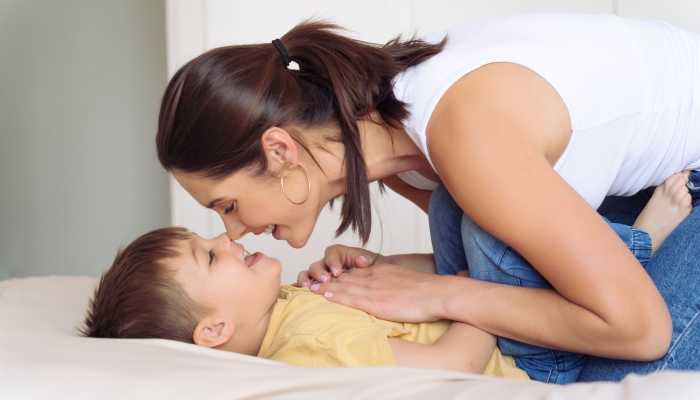
It’s hard to watch your child struggle with emotional and physical symptoms of anxiety. How can parents support our anxious children when we share the same worries?
Calm Immediate Anxiety
Work to help your child regulate their heightened emotions by trying any of the following strategies:
- Active listening88. What is Active Listening?. United States Institute of Peace. https://www.usip.org/public-education-new/what-active-listening: This technique “is a way of listening and responding to another person that improves mutual understanding. It’s an important first step to defuse the situation and seek solutions to problems.”
- Follow the 3-3-3 rule99. Salerno, J.. 8 tips to help youth (and their parents) manage anxiety this year. Possibilities for Change. 2023. https://possibilitiesforchange.org/8-tips-to-help-youth-and-their-parents-manage-anxiety-this-year/#:~:text=Ask%20your%20child%20to%20name,might%20happen%20in%20the%20future.: This particular grounding method involves asking the anxious person “to name 3 things they can see, identify 3 sounds they can hear, and move 3 different parts of their bodies. This mindfulness strategy helps children engage their senses and focus on reality rather than worrying about what might happen in the future.”
- Offer reassurance: Experts at the Child Mind Institute1010. Goldstein, C.. What to Do (and Not Do) When Children Are Anxious. Child Mind Institute. 2023. https://childmind.org/article/what-to-do-and-not-do-when-children-are-anxious encourage parents to “let kids know that they’re going to be okay, even if they’re scared. You can’t promise your child that nothing bad will happen. But you can express confidence that they can face their fears and feel less afraid over time.”
- Show empathy: Dr. Clark Goldstein at the Child Mind Institute suggests saying something like, “I know you’re scared to have an oral food challenge or skin prick test. It’s okay to be scared. You can get through this and I’m going to help you.” This type of statement, paired with a calm tone of voice and open body language, shows anxious children that the adult is calm, which can help the child stay calm, too.
Build Long-Term Coping Skills
Experts from the Anxiety and Depression Association of America1111. Tips and Strategies to Manage Anxiety and Stress. Anxiety and Depression Association of America, ADAA. 2023. https://adaa.org/tips offer the following suggestions that may become part of your daily life in managing anxiety:
- Take a time-out. Stepping back from the problem can help clear your mind and make next steps easier to identify.
- Eat nutritional meals to help regulate blood sugar and provide your brain with optimal nutrition.
- Don’t skip sleep. The body needs extra rest when it’s stressed.
- Do your best. Constantly striving for perfection isn’t sustainable behavior and can lead to heightened emotions and mental fatigue.
- Accept that you can’t control everything. Knowing when a situation is outside of your sphere of influence can help you reach acceptance.
- Use humor to release tension and provide distraction from overwhelming thoughts.
- Aim for a positive attitude. Looking for the good in situations can shift your attitude away from negative thought patterns.
Find Peer Support Groups
Many national groups, such as Kids with Food Allergies1212. Home. Kids With Food Allergies. https://kidswithfoodallergies.org (KFA) and Food Allergy Research and Education1313. Feasting with fare. FoodAllergy.org. https://www.foodallergy.org (FARE), recognize the emotional challenges managing food allergies brings to a child and their family.
Peer support groups exist within KFA and FARE to help children and young adults living with severe food allergies gain support and acceptance from kids in similar situations.
As one teen says1414. Food Allergy Anxiety. FoodAllergy.org. https://www.foodallergy.org/resources/food-allergy-anxiety#:~:text=Anxiety%20around%20food%20allergies%20is,nothing%20to%20be%20afraid%20of!, “Anxiety around food allergies is not something to ignore. It’s a common response to a very serious condition, but with the right resources, it’s nothing to be afraid of!”
When to Seek Professional Mental Health Support
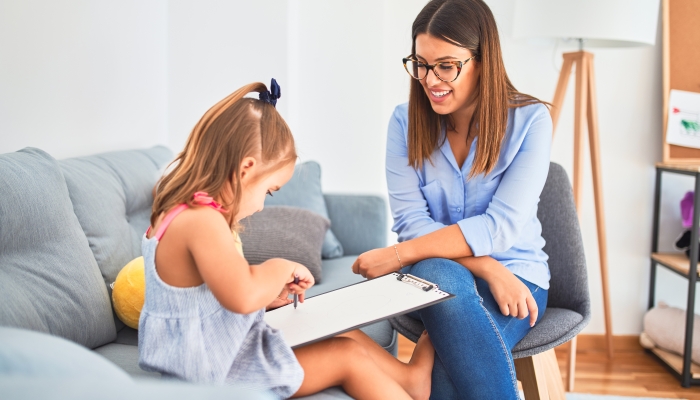
According to the American Academy of Child and Adolescent Psychiatry1515. Anxiety and Children. he American Academy of Child and Adolescent Psychiatry. 2023. https://www.aacap.org/AACAP/Families_and_Youth/Facts_for_Families/FFF-Guide/The-Anxious-Child-047.aspx, it may be time to consider evaluation from a qualified mental health professional or child/adolescent psychiatrist if anxieties become severe and begin to interfere with your child’s usual activities (like attending school, making friends, attending social events, etc.)
Types of Mental Health Professionals
As you decide to enlist professional help in managing problematic anxiety surrounding your child’s allergy, consider that there are a variety of individuals from whom to choose.
Many therapists are specially trained to manage anxiety, even in very young children, and will often say so in their professional profile.
Clinical psychologists, while referred to as doctors, don’t hold a medical degree and, therefore, can’t prescribe medications. They can, however, make recommendations to your child’s healthcare provider about what type of medication they may feel is appropriate and provide treatment through various therapy models.
Child psychiatrists1616. Fox, G.. Child and Adolescent Psychiatry as a Career. The American Academy of Child and Adolescent Psychiatry. 2017. https://www.aacap.org/AACAP/Medical_Students_and_Residents/Residents_and_Fellows/Child_and_Adolescent_Psychiatry_as_a_Career.aspx#:~:text=Becoming%20a%20child%20and%20adolescent,years%20of%20CAP%20specialty%20training. are medical doctors who, in addition to completing medical school and an internship in pediatrics or pediatric neurology, also complete two to three years of general psychiatry residency and two years of child and adolescent psychiatry specialty training. These doctors can prescribe anti-anxiety medications and may or may not also provide counseling services.
Types of Therapies
Depending on your child’s symptoms of anxiety and to what extent they impact daily life, different types of therapies may be most appropriate.
Behavior therapy1717. Centers for Disease Control and Prevention. Therapy to Improve Children’s Mental Health. Centers for Disease Control and Prevention. 2023. https://www.cdc.gov/childrensmentalhealth/parent-behavior-therapy.html, as described by the Centers for Disease Control and Prevention, “teaches children and their families how to strengthen positive child behaviors and eliminate or reduce unwanted or problem behaviors.”
Cognitive-behavioral therapy (CBT), as described by Dr. Joshua Curtiss and colleagues in 2021 in an article titled Cognitive-Behavioral Treatments for Anxiety and Stress-Related Disorders1818. Curtiss, J. E., Levine, D. S., Ander, I., & Baker, A. W.. Cognitive-Behavioral Treatments for Anxiety and Stress-Related Disorders. FOCUS. 2021;19(2), 184–189. https://doi.org/10.1176/appi.focus.20200045 in Focus: The Journal of Lifelong Learning in Psychiatry, “is an effective, gold-standard treatment for anxiety and stress-related disorders. CBT uses specific techniques to target unhelpful thoughts, feelings, and behaviors shown to generate and maintain anxiety.”
Medication therapy, according to Dr. Jerry Bubrick of the Child Mind Institute1919. Bubrick, J.. Behavioral Treatment for Kids With Anxiety. Child Mind Institute. 2023. https://childmind.org/article/behavioral-treatment-kids-anxiety/#:~:text=A%20kind%20of%20therapy%20called,we%20can%20change%20our%20emotions., which occurs in combination with CBT, is recommended for kids with severe anxiety.
Your child’s mental health provider will work with you and your child to determine what sort of approach may best meet your child’s needs.
Managing Anxiety After Experiencing a Food Allergy Emergency
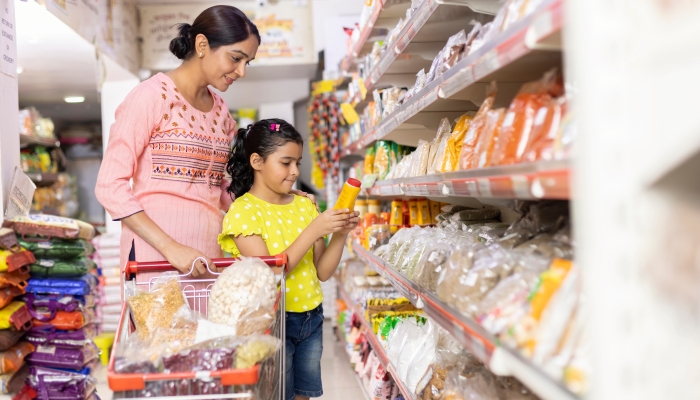
Sometimes, despite ongoing preparation and avoidance strategies, unintended exposure occurs, causing severe symptoms that necessitate using an epinephrine auto-injector and going to the hospital.
The experts at the Food Allergy & Anaphylaxis Connection Team2020. Navigating A New Diagnosis | Post-Anaphylaxis Reminders. Food Allergy & Anaphylaxis Connection Team. https://www.foodallergyawareness.org/behavioral-health/navigating-a-new-diagnosis/post-anaphylaxis-reminders (FAACT) remind us that experiencing increased anxiety or new worries post-anaphylaxis is normal and offer the following suggestions, described as T.R.A.C.E., to help rebuild confidence after a reaction:
- Time/Trust: It will take time in order for you to trust yourself and others after a food allergy emergency.
- Routine: After the initial stress is over, manage food allergy anxiety by returning to regular food-safety practices.
- Allergist: Your doctor will likely want to meet with you and your child after the incident to review what happened and identify any learning opportunities or needed adjustments to your food allergy management plan in order to avoid future incidents.
- Compassion: Give grace to your child and yourself. Using an epinephrine auto-injector in a potentially life-threatening situation is anxiety-provoking for everyone. Give each other space to process emotions and, if needed, consult a mental health professional for further help.
- Education: Do you or your child need to brush up on how to read food labels? Maybe review safe practices in serving food? Looking for opportunities to learn from mistakes—even a potentially life-threatening reaction—is part of daily life and managing food allergies.
While anxiety and fear can be part of living with food allergies, they don’t have to be the dominant emotions that define your child’s life. Work together to explore the source of fears, involving other professionals as necessary, in order to help everyone in the family thrive.
FAQs
What resources are available to help me find a mental health professional for my child?
Many professional sites offer ways to search for therapists. Psychology Today2121. Find a Therapist. Psychology Today. https://www.psychologytoday.com/us/therapists, for example, has a “find a therapist” tool. The Centers for Disease Control and Prevention2222. Centers for Disease Control and Prevention. Therapy to Improve Children’s Mental Health. Centers for Disease Control and Prevention. 2023. https://www.cdc.gov/childrensmentalhealth/parent-behavior-therapy.html (CDC) also offers a variety of resources to find mental health professionals.
References
- Tan, B. M., Sher, M. R., Good, R. A., & Bahna, S. L. (2001). Severe food allergies by skin contact. Annals of Allergy, Asthma & Immunology, 86(5), 583–586. https://doi.org/10.1016/s1081-1206(10)62908-0
- Abrams, E. M., & Sicherer, S. H. (2016). Diagnosis and management of food allergy. Canadian Medical Association Journal, 188(15), 1087–1093. https://doi.org/10.1503/cmaj.160124
- Ramirez, D. A., & Bahna, S. L. (2009). Food hypersensitivity by inhalation. Clinical and Molecular Allergy, 7(4). https://doi.org/10.1186/1476-7961-7-4
- Mankad, V. (2015, July). Food Allergies and Cross-Reactivity. Kids With Food Allergies. https://kidswithfoodallergies.org/living-with-food-allergies/what-is-a-food-allergy/food-allergies-and-cross-reactivity
- Avoiding Cross-Contact In Your Kitchen. Kids With Food Allergies. (2014, July). https://kidswithfoodallergies.org/living-with-food-allergies/choosing-safe-foods/prevent-allergic-reactions-in-your-kitchen
- Anxiety. Mental Health Foundation. (2022, February 21). https://www.mentalhealth.org.uk/explore-mental-health/a-z-topics/anxiety#:~:text=Anxiety%20isn’t%20necessarily%20a,ability%20to%20live%20your%20life.
- Quick Guide to Anxiety in Children. Child Mind Institute. (2023, October 4). https://childmind.org/guide/anxiety-in-children-quick-guide
- What is Active Listening? United States Institute of Peace. (n.d.). https://www.usip.org/public-education-new/what-active-listening
- Salerno, J. (2023, August 31). 8 tips to help youth (and their parents) manage anxiety this year. Possibilities for Change. https://possibilitiesforchange.org/8-tips-to-help-youth-and-their-parents-manage-anxiety-this-year/#:~:text=Ask%20your%20child%20to%20name,might%20happen%20in%20the%20future.
- Goldstein, C. (2023, November 14). What to Do (and Not Do) When Children Are Anxious. Child Mind Institute. https://childmind.org/article/what-to-do-and-not-do-when-children-are-anxious
- Tips and Strategies to Manage Anxiety and Stress. Anxiety and Depression Association of America, ADAA. (2023, November 4). https://adaa.org/tips
- Home. Kids With Food Allergies. (n.d.). https://kidswithfoodallergies.org
- Feasting with fare. FoodAllergy.org. (n.d.). https://www.foodallergy.org
- Food Allergy Anxiety. FoodAllergy.org. (n.d.). https://www.foodallergy.org/resources/food-allergy-anxiety#:~:text=Anxiety%20around%20food%20allergies%20is,nothing%20to%20be%20afraid%20of!
- Anxiety and Children. The American Academy of Child and Adolescent Psychiatry. (2023, October). https://www.aacap.org/AACAP/Families_and_Youth/Facts_for_Families/FFF-Guide/The-Anxious-Child-047.aspx
- Fox, G. (2017). Child and Adolescent Psychiatry as a Career. The American Academy of Child and Adolescent Psychiatry. https://www.aacap.org/AACAP/Medical_Students_and_Residents/Residents_and_Fellows/Child_and_Adolescent_Psychiatry_as_a_Career.aspx#:~:text=Becoming%20a%20child%20and%20adolescent,years%20of%20CAP%20specialty%20training.
- Centers for Disease Control and Prevention. (2023, March 8). Therapy to Improve Children’s Mental Health. Centers for Disease Control and Prevention. https://www.cdc.gov/childrensmentalhealth/parent-behavior-therapy.html
- Curtiss, J. E., Levine, D. S., Ander, I., & Baker, A. W. (2021). Cognitive-Behavioral Treatments for Anxiety and Stress-Related Disorders. FOCUS, 19(2), 184–189. https://doi.org/10.1176/appi.focus.20200045
- Bubrick, J. (2023, October 30). Behavioral Treatment for Kids With Anxiety. Child Mind Institute. https://childmind.org/article/behavioral-treatment-kids-anxiety/#:~:text=A%20kind%20of%20therapy%20called,we%20can%20change%20our%20emotions.
- Navigating A New Diagnosis | Post-Anaphylaxis Reminders. Food Allergy & Anaphylaxis Connection Team. (n.d.). https://www.foodallergyawareness.org/behavioral-health/navigating-a-new-diagnosis/post-anaphylaxis-reminders
- Find a Therapist. Psychology Today. (n.d.). https://www.psychologytoday.com/us/therapists
- Centers for Disease Control and Prevention. (2023, March 8). Therapy to Improve Children’s Mental Health. Centers for Disease Control and Prevention. https://www.cdc.gov/childrensmentalhealth/parent-behavior-therapy.html
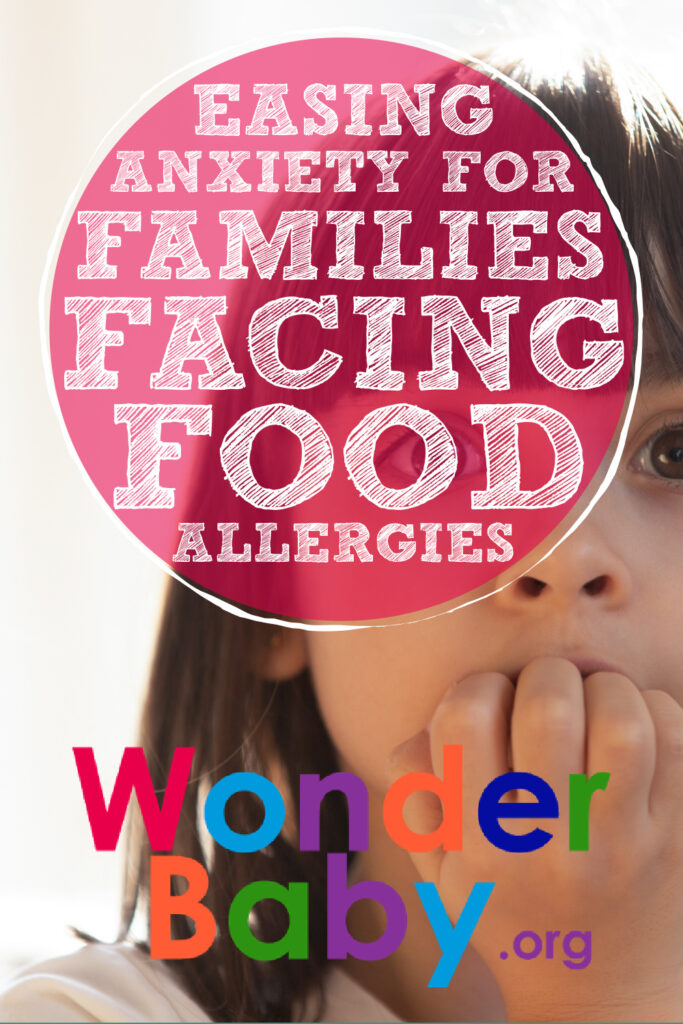
The information WonderBaby provides is not intended to be, and does not constitute, medical or other health advice or diagnosis and should not be used as such. Always consult with a qualified medical professional about your specific circumstances.
Related Posts
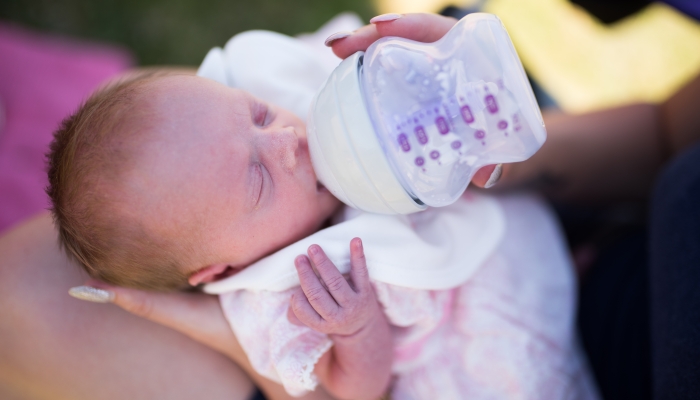
Feeding and Eating, Special Needs
Feeding Therapy Approaches for Infants with Special Needs
Many children with special needs have feeding difficulties. Working with a speech therapist, being patient, and experimenting with textures can help.

Feeding and Eating
Unexpected Foods That Cause Allergen Cross-Reactivity
A variety of unexpected foods and environmental substances can trigger an allergic reaction through cross-reactivity to food proteins.
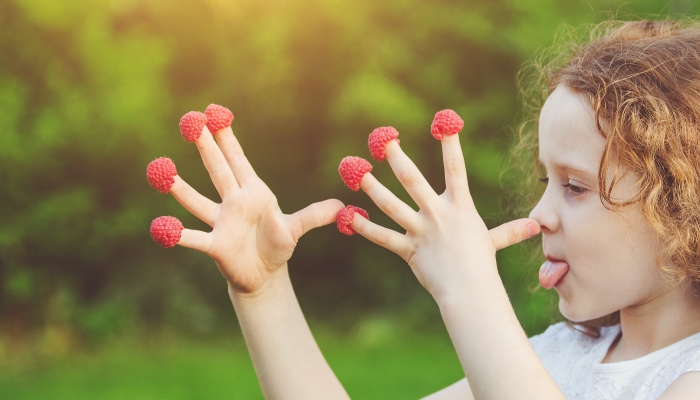
Feeding and Eating
Empowering Kids to Self-Manage Severe Food Allergies
With time, practice, and support, kids with food allergies can successfully manage their condition and necessary accommodations. Learn how right here.